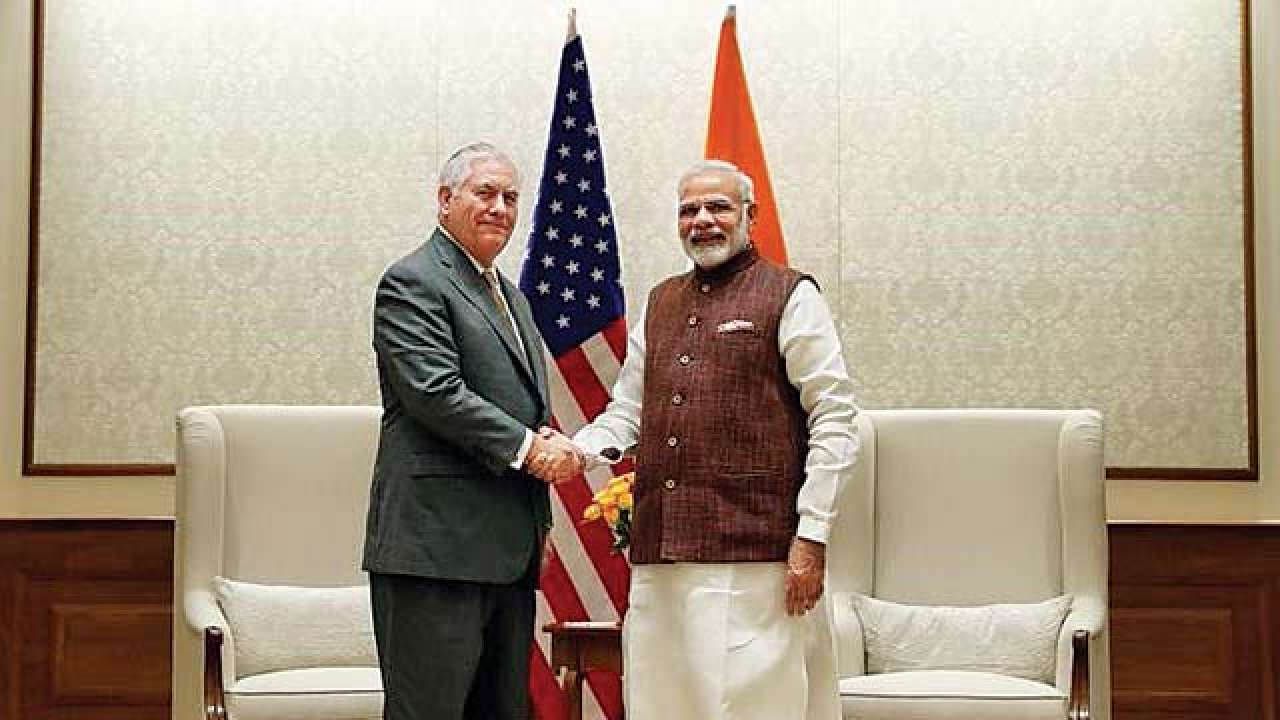
The just-concluded visit of US Secretary of State Rex Tillerson to South Asia (October 26) was his first to the region and included a whistle-stop tour of Afghanistan and Pakistan and an extended two night stay in Delhi. The strategic import of this visit for the Asian region and by extension the larger global canvas is better comprehended when reviewed against what preceded the Tillerson visit and what followed almost immediately.
A week prior to the South Asia visit, Tillerson made what may be recalled in the future as a very significant articulation of the Trump assessment and related policy apropos the two Asian giants — India and China. This speech was delivered at a major Washington DC think-tank on October 18 and the date is relevant, for this overlapped with the inauguration of the 19th Party Congress of the Chinese Communist Party in Beijing — a once in five-years event that is seminal to the domestic political dynamic of China.
These two speeches have considerable significance for Delhi and the evolution of its orientation towards these two major powers and their innate strategic dissonance, given India’s own status as a critical ‘swing-state’ in the emerging macro picture of the early 21st century.
The Tillerson speech in DC was a curtain-raiser for the Delhi visit and struck the right chords by dwelling on Diwali — the Indian festival of lights and what that symbolised for illuminating the bi-lateral between the two large democracies. Titled “On Defining Our Relationship with India for the Next Century” the speech was both expansive and generous in how the relationship was envisioned.
The maritime flavour of the Tillerson speech was distinctive and the term ‘Indo-Pacific’ was mentioned almost 20 times — and the formulation very ambitious. It noted: “The United States and India are increasingly global partners with growing strategic convergence. The emerging Delhi-Washington strategic partnership stands upon a shared commitment upholding the rule of law, freedom of navigation, universal values, and free trade. Our nations are two bookends of stability — on either side of the globe — standing for greater security and prosperity for our citizens and people.”
Furthermore, in what may be termed a departure from diplomatic protocol, China was referred to in an unmistakable manner and the contrast with India was stark. Tillerson observed: “China, while rising alongside India, has done so less responsibly, at times undermining the international, rules-based order even as countries like India operate within a framework that protects other nations’ sovereignty. China’s provocative actions in the South China Sea directly challenge the international law and norms that the United States and India both stand for.”
Link this with the marathon 205-minute Xi Jinping speech in Beijing on the same day and the latent discord between the world’s two major powers is palpable. President Xi, who has now been elevated to near-canonical status in the Chinese pantheon alongside Chairman Mao, has yoked himself and his nation to the realisation of the Chinese dream.
Certitude about China’s world-view and a dogged assertiveness that seeks deference and subservience to the Middle Kingdom from its interlocutors are the dominant features of the Xi vision. This will be predicated on the economic bonanza expected from the Belt and Road Initiative (BRI) and buttressed by building a strong and modern military that can ‘win wars.’ The inference for the world is that China will rise, for sure, and it need not be peaceful!
Against this backdrop, the Tillerson visit to Afghanistan and Pakistan could be seen as an extension of the Trump team’s review of US policy towards South Asia going back to 9/11 and the global war on terror. Rawalpindi’s duplicity in supporting terror groups selectively, even while projecting itself as a victim of terror, was rejected and the Pakistan government served a warning — reform or else.
This tough-talk tenor continued in Delhi, where again for the first time that one can recall — a senior US cabinet official dwelt on Pakistan’s perfidy and fragility. In talks with his Indian counterpart Foreign Minister Sushma Swaraj, Secretary Tillerson referred to his concern “about the stability and security of Pakistan’s government” if the domestic terror foot-print grows in an unfettered manner that it currently is.
The post-Tillerson visit response from two Asian capitals completes the picture and points to the strategic import of the visit that had been suggested at the outset. Beijing formally noted that Pakistan has made a ‘positive’ contribution towards counter-terrorism and asked for mutual respect. Tokyo’s response was to commit itself to ‘further cooperation’ in the Indo-Pacific and has proposed a quadrilateral dialogue with the US, India and Australia.
To the extent that the Chinese foray into the Indian Ocean littoral has been described as a string of pearls, will the Indo-Pacific region soon be adorned with a diamond necklace? A long-term strategic partnership that brings together the major democracies of the maritime domain who remain committed to consensual rule of law; and equitable and environmentally compatible prosperity.
Bringing China on board will be the Holy Grail.
The writer is a former Commodore in the Indian Navy